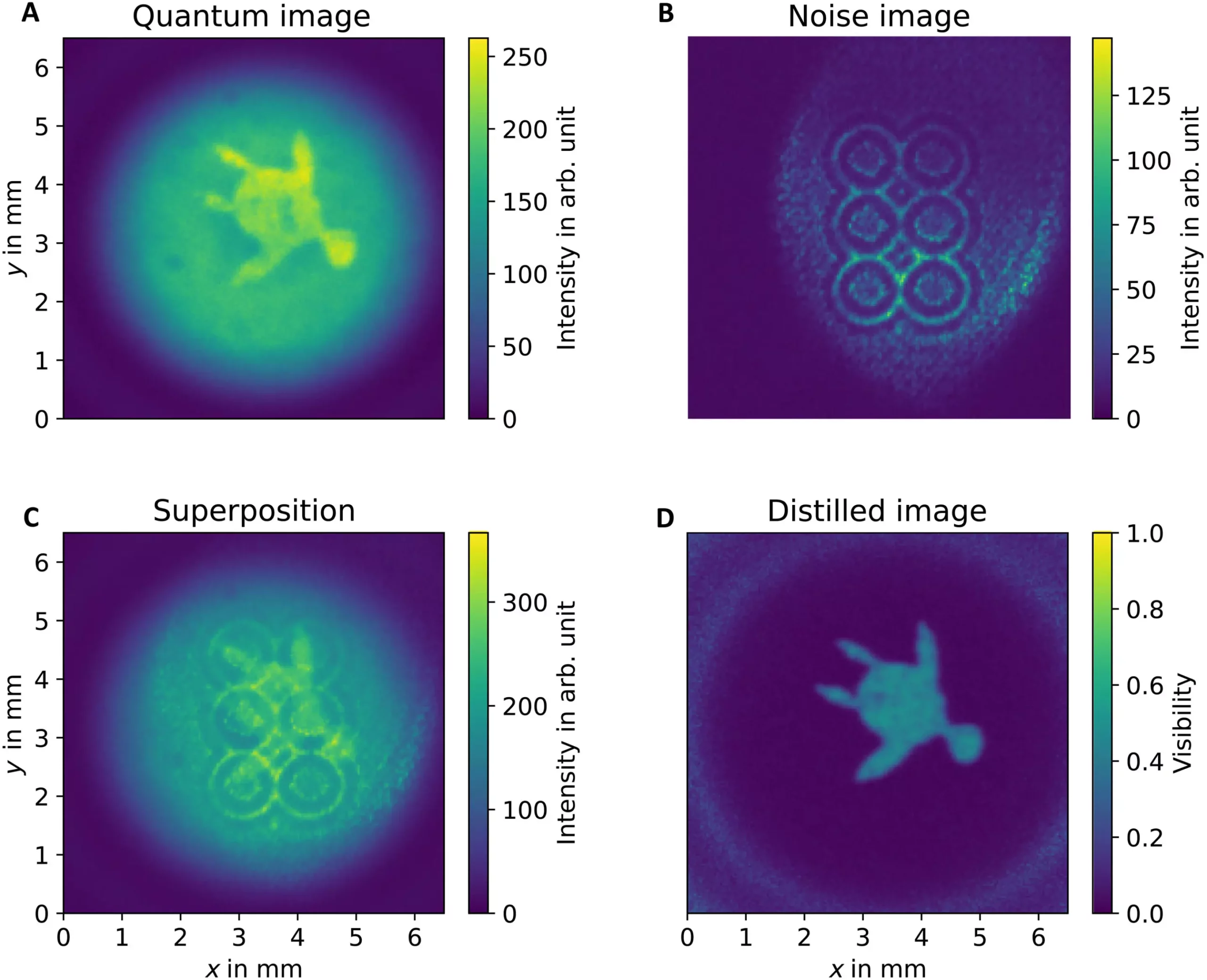Quantum imaging has emerged as a promising field, offering significant advantages over classical protocols. By utilizing undetected probing photons, researchers have demonstrated the ability to work in low-photon flux regimes for super-resolution imaging. However, noise resilience is a critical factor in the success of quantum imaging protocols. In a recent report published in Science Advances, a team of researchers in Germany, led by Jorge Fuenzalida, experimentally demonstrated a method to make quantum imaging resilient to noise, even in the presence of extreme noise levels.
Distillation or purification plays a crucial role in removing decoherence introduced by the environment in a quantum system. In quantum imaging, distillation can be used to clean a quantum image from noise. Fuenzalida and his team introduced and experimentally verified a quantum imaging distillation method that detects single photons only. This method, known as Quantum Imaging with Undetected Light (QIUL), utilizes a two-photon wide-field interferometric imaging approach. The team introduced a source of noise in the quantum imaging scheme to study the resilience of the method, showing good performance even for noise intensities surpassing the actual signal of interest.
The Quantum Imaging Distillation Method
To distill an image, Fuenzalida and his team used Quantum Holography with Undetected Light (QHUL), where the object information is carried into a single-photon interference pattern. By comparing the intensity difference of the method to the intensity variance of noise, the team was able to distill the quantum image. The generation of photon pairs mediated by the interaction of an intense pump beam with the atoms of a nonlinear crystal was achieved through spontaneous parametric down-conversion. An interferometer was used to generate a pair of signal-idler photons, while the noise variance in the setup contributed to the signal intensity variance. Distillation of the quantum image was possible when the difference in signal intensity was higher than the noise variance.
Experimental Setup and Findings
Fuenzalida and his colleagues implemented an experimental setup using a non-linear interferometer in a Michelson configuration and pumped a crystal with a continuous wave laser. By separating the signal, idler, and pump beams using dichroic mirrors and reflected into the crystal with a series of mirrors, they were able to generate a photon pair via spontaneous parametric down-conversion. The camera in the experimental framework captured an interference pattern of signal photons, transferring the object information obtained by the idler photon to the signal photon interference pattern.
The team introduced noise into the system by using a continuous wave diode laser with variable pump power. By varying the properties of classical illumination, such as intensity and variance, they examined the effects of noise on the distillation performance. The scientists superimposed classical and quantum images to perform quantum holography with undetected light, allowing them to distill the quantum image under different intensities of noise. As the noise intensity increased, they measured the accuracy of the experimental results.
In their experiments, Fuenzalida and his team demonstrated the resilience of quantum imaging to noise, even at extreme levels. By superimposing partially or completely a classical source of noise on top of the quantum image on the camera, they proved that the method worked consistently. The performance of the method remained unaffected by noise intensities surpassing the signal intensity of interest. This resilience opens up possibilities for further exploration and the development of innovative versions of quantum-based light detection and ranging (LIDAR) systems using undetected light.
The study conducted by Fuenzalida and his colleagues showcases the resilience of quantum imaging to extreme noise levels. By utilizing a distillation method and two-photon wide-field interferometric imaging approach, they were able to distill a high-quality image of an object regardless of the noise intensity surpassing the actual signal of interest. This research provides valuable insights into the potential of quantum imaging in open systems and paves the way for the development of advanced quantum-based imaging technologies. With its ability to overcome noise limitations, quantum imaging holds promise for a wide range of applications in various fields, including microscopy, biophysics, and remote sensing.


Leave a Reply